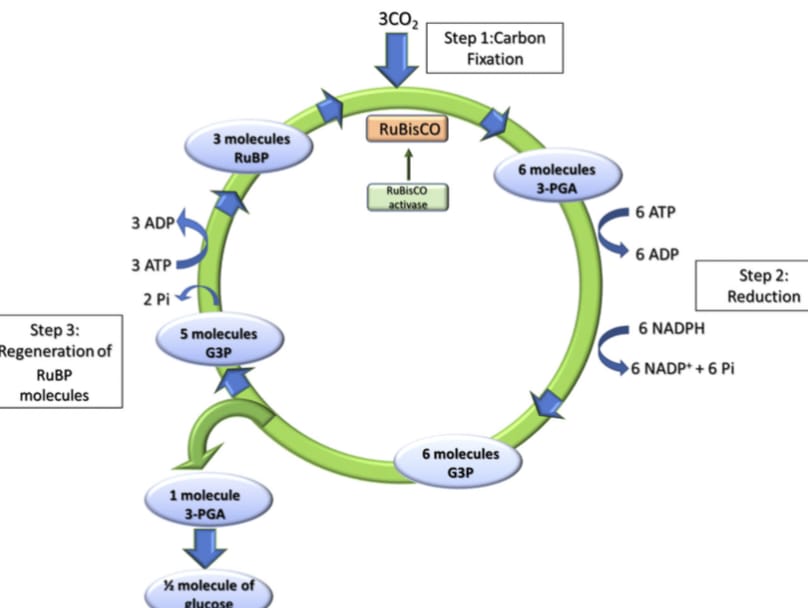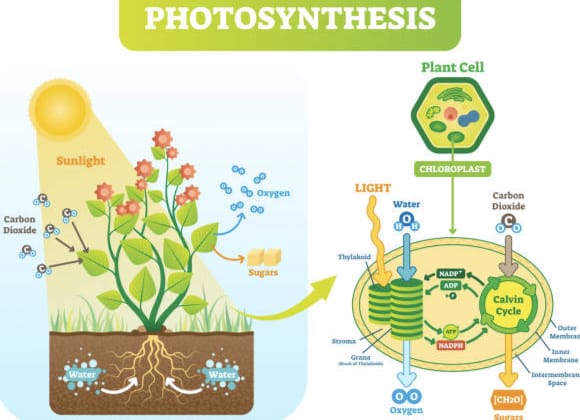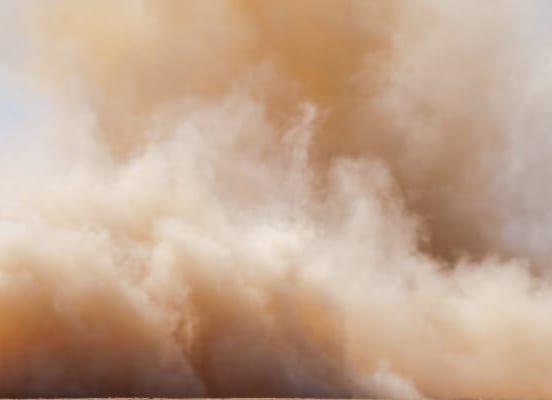What is Photosynthesis? know more.
Photosynthesis is a familiar word among science students. We need food whenever we are hungry, and drinks to quench our thirst. Plants and other members of the ecosystems also need food to survive and grow.
What is Photosynthesis?
Photosynthesis is a familiar word among science students. We need food whenever we are hungry, and drinks to quench our thirst. Plants and other members of the ecosystems also need food to survive and grow Plants prepare their own food, for survival and to secure the future. They need Sunlight, Carbon Dioxide, and water for the preparation of food.
The process by which plants and certain other organisms like algae convert light energy ( Sunlight) into chemical energy ( in the form of sugar) is called photosynthesis. Photosynthesis derives its name from the Greek word phos means “light” and synthesis means “putting together.” Most of plants, algae, and cyanobacteria perform photosynthesis, for which such organisms are called photoautotrophs.
The process of photosynthesis is commonly written as 6CO2+6H2O→C6H12O6+6O2, which means in the process of photosynthesis, the reactants six Carbon Dioxide molecules, and six water molecules are converted (by light energy) into sugar molecules and oxygen molecules, captured by chlorophyll.

Jon Ingenhousz dutch born British scientist discovered the process of photosynthesis in 1779, he let the world know by publishing an article on it. He is called the father of photosynthesis.
Process:
During photosynthesis, many processes are followed by plants. But we may broadly divide the process into two, i,e. Light-dependent reaction and light-independent reaction.
Light-dependent reaction:
The plants absorb water and minerals from the soil/earth and transport them to upwards to leaves, through trunk and branches, which are the kitchen of the plants. The light-dependent reaction takes place in the thylakoid membranes of the chloroplasts.
The plants have chlorophyll, which is a green pigment found in the chloroplast of the plant cell, (and mesosomes of cyanobacteria), responsible for the green colour of the plants. Chlorophyll absorbs energy from Sunlight (light waves), and converts it into chemical energy in form of molecules of ATP and NADPH. Without Sunlight this process/ reaction can not be completed. Hence it is a light-dependent or light reaction.
Light-dependent reaction, chemical formula:
2H2O+2NADP++3ADP+3Pi→O2+2NADPH+3ATP
Light-independent reaction:
Light-independent reaction is also called dark reaction or Carbon fixation reaction. This reaction takes place in the stroma ( aqueous fluid surrounding the stacks of thylakoids ) and the cytoplasm without light, that is why it is a light-independent or dark reaction. It is also called the biosynthetic phase or Calvin Benson Cycle.
It is named after Malvin Calvin who discovered it. During the process energy from ATP (adenosine triphosphate-is the source of energy for use and storage at the cellular level) and NADPH (nicotinamide adenine dinucleotide phosphate-required cofactor for CYP mediated biotransformation, and oxygen serves as a substance) molecules are used to assemble Carbohydrate molecules, like Glucose from Carbon Dioxide taking from the air.
Dark reaction -chemical formula:
3CO2+6 NADPH+5H2O+9ATP → G3P+2H++6NADP++9ADP+8Pi

The sugar is used by plants and oxygen is released as by-products to air. Sugar is further converted into starch. From these carbohydrates, the plant can produce complex substances as food, needs for its life and growth. These food substances include proteins, juice, fats (oil), etc. not needed immediately for growth, stored in the plant including its seeds, fruits, tubers, or bulbs. The accumulated food stored in the seed is utilized in its germination.
The energy produced by photosynthesis millions of years back is now available in fossil fuels like coal, petroleum, and natural gas, the backbone of industrial society and the lifeline of modern civilization.
Conclusion:
Photosynthesis is a process by which plants on earth in water and certain other micro organism produce their food and in the process consume Carbon Dioxide and release oxygen into the air. Without a plant kingdom, there is no existence of an animal kingdom. Imagine such a scenario, where photosynthesis stops, which means no more oxygen for respiration for us. All are dying within a few seconds. No life, no ecosystem, the earth is only barren land.





6 Comments
Very useful information ✨✨✨✨
Best information about Photosynthesis 🙏
Thank you
[…] radiant power empowers the plants to process photosynthesis and during the process Carbon Dioxide (Co2) is converted into glucose and releases Oxygen into the […]
[…] Photosynthesis is another example involving chemical energy. During photosynthesis, the plant converts the (sunlight)solar energy into chemical energy mostly in the form of oxygen. […]
[…] have a very dependable relationship with algae. The algae provide nutrients and oxygen produces by photosynthesis to anemones and in turn, they (anemones) provide algae protection and create opportunities for their […]